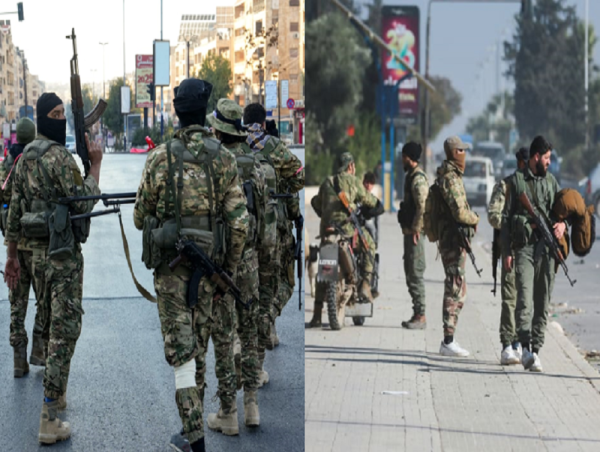These documents, discovered after the fall of Assad’s regime and the establishment of a transitional government led by Ahmad Al-Shara, expose Tehran’s extensive role in training and supporting Syrian security forces to maintain its influence in the region.
Iran’s Training Networks in Syria
The leaked documents detail the Iranian regime’s organization of thousands of training programs for Syrian security personnel, conducted by the Quds Force of the Islamic Revolutionary Guard Corps (IRGC).
Between 2015 and 2018, an estimated 27,771 individuals were trained in various security and intelligence disciplines by the IRGC’s Unit 18050. These programs, held at sites such as the “School of Intelligence” near Damascus International Airport, ranged from basic security courses to advanced cyber intelligence and espionage training.
The files also highlight the presence of key Iranian figures, including an individual identified as “Haj Heydar,” who played a central role in coordinating these efforts. Meetings between Iranian and Syrian officials, as outlined in the documents, underscored Tehran’s commitment to supporting and expanding these training programs.
Sectarian Tensions and Strategic Fallout
Following Assad’s fall, Tehran has reportedly sought to destabilize the transitional government in Damascus through sectarian provocations. According to Syria TV, these efforts include leveraging the extensive network of Iranian-trained operatives who remain in Syria, creating significant security challenges for the new government.
Observers have noted that these operatives, loyal to Iranian interests, represent a transnational threat with agendas extending beyond Syria’s borders. This destabilizing influence is seen as part of the regime’s broader strategy to compensate for the loss of its primary ally in the Middle East.
The Impact of Iranian Influence on Syria’s Future
The transitional government faces monumental challenges in dismantling Iran’s entrenched security networks. Experts warn that without decisive measures, these operatives could serve as tools for Tehran to reignite instability and regain influence in Syria.
According to Syria TV, many observers emphasize that the transitional Syrian government requires significant international and regional support to counter Iranian interference.
They argue that such backing is crucial not only for addressing immediate security concerns but also for guiding Syria toward stability and independence from Tehran’s destabilizing influence.
As Syria TV highlights, the clerical regime in Iran has not only been a destabilizing force in Syria but remains a broader threat to regional stability, further exposing its reliance on sectarian and terrorist tactics to maintain its influence.
Protests erupted in Syria’s coastal cities last week, with allegations surfacing that the Iranian regime and Hezbollah are orchestrating unrest through remnants of the former Assad regime.
Colonel Riyad al-Asaad, founder of the Free Syrian Army, accused Tehran and its Lebanese ally of inciting chaos to disrupt the country’s fragile stability. “Our intelligence confirms that Hezbollah is sending agents to Syria to create disturbances,” al-Asaad stated in an interview with Al-Hadath TV.
The escalating tensions, marked by armed clashes and sectarian rhetoric, have raised concerns about the clerical regime’s continued interference in Syria’s post-Assad transition.
The protests allegedly began as a reaction to a resurfaced video showing an attack on an Alawite religious shrine in Aleppo. However, analysts suggest the demonstrations are part of a coordinated effort involving Iranian proxies and Hezbollah operatives.
Reports indicate that Hezbollah has mobilized its operatives from Lebanon to fuel unrest and re-establish its influence in key Syrian regions. In the town of Talkalakh near the Lebanese border, Hezbollah-affiliated forces have engaged in fierce clashes with local opposition groups.
The death of Shuja al-Ali, a prominent pro-regime militia leader linked to Hezbollah, marked a turning point in these clashes. Colonel Riyad al-Asaad commented on this development: “The elimination of Shuja al-Ali dealt a significant blow to Hezbollah. His removal will restore calm to Homs and surrounding areas.”
The demonstrations, initially peaceful, escalated into violent confrontations following reports of live fire by regime-aligned forces. Local sources claim that remnants of the Assad regime, emboldened by Iranian support, launched surprise attacks on Syrian military units aligned with the new administration. The clashes have led to intensified security measures in areas like Talkalakh and Tartus, where Hezbollah operatives are reportedly being pursued.
Military sources report progress in containing the unrest. Arrests of high-ranking regime loyalists in Tartus, combined with the neutralization of key figures like Shuja al-Ali, have bolstered efforts to restore stability. In Homs, several groups formerly loyal to Assad have issued statements aligning themselves with the new Syrian administration.
The timing of the protests coincided with statements from Iranian officials, raising suspicions about Tehran’s role in orchestrating the unrest. Iranian influence in the region has long been tied to its reliance on militias and proxy networks to maintain a foothold in Syria. Observers suggest that these recent events could represent Iran’s “last card” in an attempt to reshape the evolving political and military dynamics in post-Assad Syria.
These developments come as the regime’s Supreme Leader Ali Khamenei, in a speech earlier this week, predicted the rise of a “strong and honorable group” in Syria, asserting that “brave Syrian youth, with nothing left to lose,” would resist and overcome forces responsible for insecurity in their homeland.
Echoing this sentiment, Mohsen Rezaee, former commander of the IRGC, claimed on social media that “the resilient Syrian youth and people will revive resistance in a new form within a year.”
The Arab League, in a statement released Thursday, condemned recent remarks by Iranian officials regarding Syria, accusing Tehran of “stoking discord among the Syrian people” in the aftermath of Assad’s fall.
The statement warned Iran not to “fan the flames of conflict” and called for an end to external meddling that could destabilize Syria further.
As long as the clerical regime in Tehran remains in power, peace in the Middle East will remain an elusive goal. Desperate to avoid the fate of their long-time ally Bashar al-Assad, the world’s leading state sponsor of terrorism seeks to demonstrate to the Iranian people that regime change would plunge the country into chaos and failure.
In May 2023, the Iranian dissident group GhyamSarnegouni released a series of classified documents detailing Iran’s strategic plans in Syria and Lebanon. These documents outlined Tehran’s efforts to bolster its regional influence through military support, economic initiatives, and cultural ties.
Recent developments, such as the fall of the Assad regime in Syria and the weakening of Hezbollah in Lebanon, have significantly undermined Iran’s position in the region.
These leaked documents illuminate the clerical regime’s regional strategies and provide a stark perspective on how its agenda has unraveled. They underscore the regime’s mounting challenges and foreshadow the struggles it will likely face in maintaining control in the future.
To view the latest text, please use the link below.
https://www.ncr-iran.org/en/news/terrorism-a-fundamentalism/leaked-documents-expose-iranian-regimes-unraveling-agenda-in-syria-and-lebanon/
To subscribe weekly Newsletter of NCRI, please use this link. https://bit.ly/3SMgEla
Shahin Gobadi
NCRI
+33 6 61 65 32 31
email us here
Legal Disclaimer:
EIN Presswire provides this news content "as is" without warranty of any kind. We do not accept any responsibility or liability for the accuracy, content, images, videos, licenses, completeness, legality, or reliability of the information contained in this article. If you have any complaints or copyright issues related to this article, kindly contact the author above.
![]()





